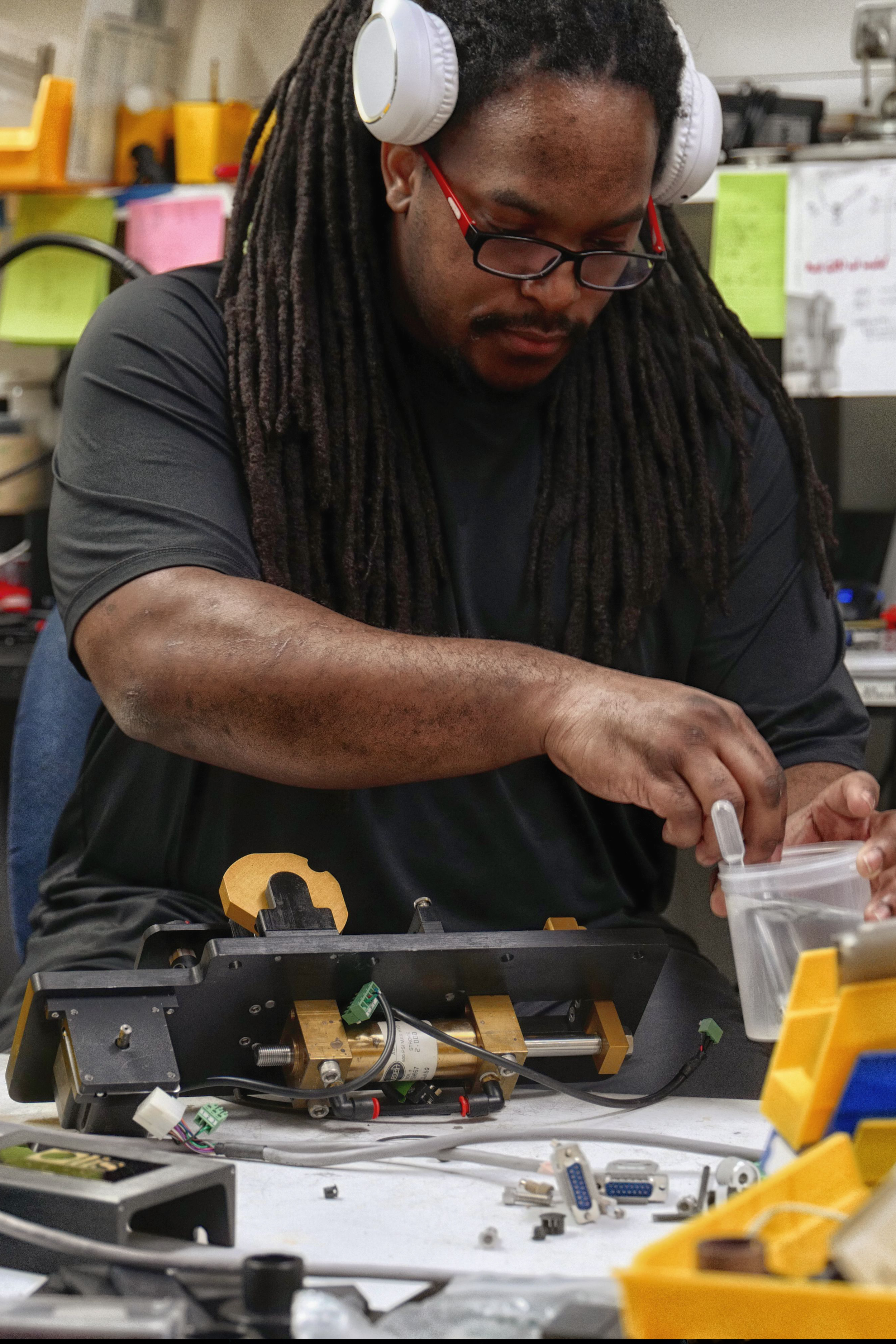What Does Circularly Polarized Luminescence Mean?
Wiki Article
The Only Guide to Uv/vis
Table of ContentsSome Known Factual Statements About Circular Dichroism The Ultimate Guide To Circularly Polarized LuminescenceThe smart Trick of Circularly Polarized Luminescence That Nobody is DiscussingThe 6-Second Trick For Circularly Polarized LuminescenceThe 10-Minute Rule for Uv/vis

Spectrophotometry is most typically applied to ultraviolet, visible, and infrared radiation, contemporary spectrophotometers can interrogate broad swaths of the electro-magnetic spectrum, including x-ray, ultraviolet, noticeable, infrared, and/or microwave wavelengths. Spectrophotometry is a tool that depends upon the quantitative analysis of particles depending upon just how much light is absorbed by colored substances.
Not known Details About Uv/vis
A spectrophotometer is typically used for the measurement of transmittance or reflectance of options, transparent or nontransparent solids, such as polished glass, or gases. Lots of biochemicals are colored, as in, they absorb noticeable light and for that reason can be determined by colorimetric treatments, even colorless biochemicals can frequently be transformed to colored compounds ideal for chromogenic color-forming reactions to yield substances appropriate for colorimetric analysis.: 65 Nevertheless, they can likewise be designed to measure the diffusivity on any of the noted light ranges that typically cover around 2002500 nm using different controls and calibrations.An example of an experiment in which spectrophotometry is used is the determination of the stability constant of an option. A specific chemical response within a service may happen in a forward and reverse direction, where reactants form products and products break down into reactants. At some time, this chemical response will reach a point of balance called a balance point.
Uv/vis/nir Fundamentals Explained
The quantity of light that travels through the solution is a sign of the concentration of particular chemicals that do not permit light to pass through. The absorption of light is due to the interaction of light with the electronic and vibrational modes of molecules. Each type of molecule has an individual set of energy levels connected with the makeup of its chemical bonds and nuclei and therefore will soak up light of particular wavelengths, or energies, resulting in unique spectral properties.
They are extensively used in numerous markets including semiconductors, laser and optical production, printing and forensic examination, as well as in labs for the study of chemical substances. Spectrophotometry is typically used in measurements of enzyme activities, decisions of protein concentrations, determinations of enzymatic kinetic constants, and measurements of ligand binding reactions.: 65 Eventually, a spectrophotometer is able to figure out, depending on the control or calibration, what substances are present in a target and exactly how much through estimations of observed wavelengths.
Created by Arnold O. Beckman in 1940 [], the spectrophotometer was created with the aid of his colleagues at his company National Technical Laboratories founded in 1935 which would end up being Beckman Instrument Business and ultimately Beckman Coulter. This would come as a service to the previously produced spectrophotometers which were not able to soak up the ultraviolet properly.
The Ultimate Guide To Uv/vis/nir
It would be discovered that this did not offer satisfactory results, for that reason in Design B, there was a shift from a glass to a quartz prism which permitted much better absorbance outcomes - UV/Vis (https://disqus.com/by/julieanndesalorenz/about/). From there, Design C was born with a modification to the wavelength resolution which ended up having 3 units of it producedIt irradiates the sample with polychromatic light which the sample absorbs depending on its properties. Then it is sent back by grating the photodiode selection which detects the wavelength area of the spectrum. Ever since, the creation and implementation of spectrophotometry gadgets has actually increased exceptionally and has turned into one of the most innovative instruments of our time.

Some Known Questions About Uv/vis.
Historically, spectrophotometers use a monochromator including a diffraction grating to produce the analytical spectrum. The grating can either be movable or fixed. If a single detector, such as a photomultiplier tube or photodiode is utilized, the grating can be scanned step-by-step (scanning spectrophotometer) so that the detector can measure the light intensity at each wavelength (which will correspond to each "step").In such systems, the grating is repaired and the strength of each wavelength of light is measured by a various detector in the selection. In addition, most contemporary mid-infrared spectrophotometers use a Fourier change Find Out More method to obtain the spectral information - https://pastebin.com/u/olisclarity1. This technique is called Fourier transform infrared spectroscopy. When making transmission measurements, the spectrophotometer quantitatively compares the fraction of light that goes through a referral option and a test solution, then electronically compares the intensities of the two signals and calculates the percentage of transmission of the sample compared to the recommendation requirement.

Report this wiki page